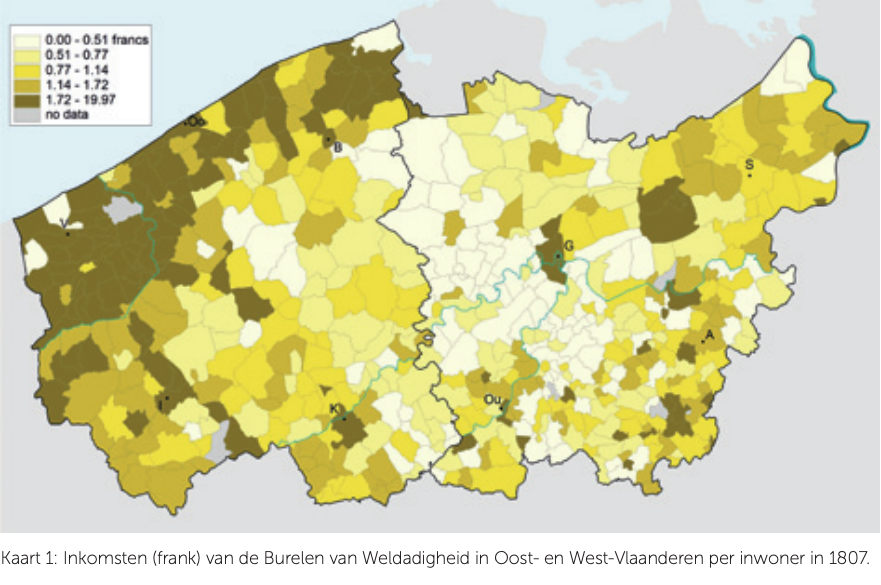DETAILS
Used database:
Date:
Category:
PROSPERITY AND DEMOGRAPHY AT THE TIME OF MALTHUS
Article:
Devos, Isabelle, Thijs Lambrecht and Anne Winter. “Welfare and demography in the time of Malthus. Regional and local variations in poor relief and population developments in Flanders, c. 1750-1810”. Study Week Fondazione Istituto Internazionale di Storia Economica “F. Datini”, 1-25. Prato, 2019.
Abstract:
“Poor relief has often been attributed a dynamic role in early modern economic and demographic change, from easing transitions to wage labour and thereby encouraging economic growth and industrialization, to mitigating the effects of high mortality, or conversely, stimulating high levels of fertility. Recent historical research, however, is more sceptical about these Malthusian claims. To this date, the mechanisms between economic inequality, welfare spending and demographic behaviour have hardly been investigated for areas outside England. Flanders represents a particularly interesting region for research that aims to investigate the development of socio-economic inequalities at the local and regional level. Not only because of the existence of distinct socio-economic structures within Flanders, but also due to the uniform presence of local poor relief institutions and general rules on entitlement. At the same time, the dissimilar income structure of local poor tables, based on past and present charitable donations rather than taxation, implied a high degree of inelasticity in times of dearth and could imply great local differences in poor relief practices from one parish to the next. However, the relationship between and effects of structural socio-economic characteristics on the one hand and micro-level variations on the other hand remain unclear. The data collected by the STREAM project (streamproject.ugent.be) together with its tailored geographical information system (GIS) allow us to explore these relationships for the rural parishes of early modern Flanders. In this paper we examine spatial patterns in poor relief and demographic behaviour and how these were interrelated.”

